Selecting a Bible to use can be overwhelming. There are so many different translations and versions available that it is easy to get lost in the choices and give up. But have faith! You WILL find the right Bible for you and your needs. It may take some time and some digging, but you will find what speaks to you.
It is okay to ask people for recommendations as to what Bible they suggest. But don’t just ask for their recommendation. Ask them why they selected the Bible they use and what do they like and dislike about it. It is a good idea to ask if you can look at their Bible and see how it reads.
To help you get a feel for the readability of each version you can download the YouVersion app and explore the different translations there. If you do not want to download the app you can check them out on the web at Bible.com. Biblehub.com is also a good resource for looking at different versions and will show you direct translations side by side or on the same page so that you can compare the wording.
There are always people who will tell you that a King James Version is the ONLY translation that you should use and that it is the only authorized version on the market. But for new believers reading a KJV is very challenging. The language is outdated and hard to understand. True, there is the New King James Version (NKJV) which modernizes it some, but it can still be challenging compared to others.
Let’s look at some of the available versions. There are MANY different versions within each category. Only a few examples have been listed below.
Word For Word or Literal Translations
Word for word or literal translations are ones that attempt to keep the words as close as possible to the original meaning. It is impossible for them to translate the words directly, but the team of translators and scholars do their best to maintain the original meaning.
Some Examples: King James Version (KJV), New King James Version (NKJV), New American Standard Bible (NASB), and The English Standard Version (ESV).
Thought for Thought Translations
These translations focus on maintaining the message or the thoughts behind the words. They were also compiled by scholars and teams of translators with the goal of creating a translation that maintains meaning. For example, if it said, “I am as hungry as a horse” the translation could be “I am extremely hungry.”
Some Examples: New International Version (NIV), New Living Translation (NLT), Christian Standard Bible (CSB), and the New Revised Standard Version (NRSV)
Paraphrase Translations
Paraphrased Bibles are some of the simplest in terms of readability but lose some of the meaning. A paraphrase is when you say something in your own words. It is not a translation, really, as much as someone’s direct interpretation and/or opinion. The purpose of a paraphrase translation is to simplify the meaning, not prioritize accuracy. They often utilize informal language and modern idioms.
Using a paraphrase translation may help you understand the basic meaning of a Bible verse but probably shouldn’t be the only version you consult when you are studying. Use them for additional, supplemental reading alongside the version you use for study.
Some Examples: The Message (MSG), The Living Bible (TLB)
Types of Bibles
To add to the translation confusion, you also have different TYPES of Bibles. You will find all sorts of different Bibles, each with different information, designs, and layouts.
For example, study bibles will offer you additional notes, historical facts, explanations, and more on each page. The Bible verses will usually take up about half of the page while the notes will be at the bottom.
There are also devotional Bibles that include additional readings to encourage you and help you grow spiritually. You can find devotional Bibles for men, women, children, pastors, moms, youth, etc.
For crafty people there are journaling Bibles and coloring Bibles that allow you to write notes in the margins on the side and color drawings and doodles scattered throughout.
There are even archaeology Bibles available that will show you what archaeological discoveries have been made to verify events, locations, or people in the Bible.
It is just as overwhelming selecting from the different types of Bibles as it is selecting a translation!
Selecting a Bible for YOU
Now that you have a basic understanding of the types of Bibles, how do you narrow down which one is best? Here are some tips to help guide you in selecting the perfect translation for YOU.
- Purpose: What do you want to do? Are you wanting to study? Are you looking for something artsy that you can doodle in? Are you wanting something written specifically for men, women, youth, or kids?
- Explore: Spend some time looking at different versions and translations. You can look at translations on the web or in an app, but it might be good to visit a bookstore that sells Bibles so that you can look through them in person.
- Talk to others: Get recommendations. Look at their Bibles. See if you can borrow one for a few days (if they have extras). Find out why they picked what they did.
- Cost: Some Bibles can be quite pricey. Finding a Bible that you like shouldn’t break the bank. There are discount vendors you can shop from (try ChristianBook.com or BibleStore.com for good prices). You can also find Bibles at thrift stores or used bookstores.
It is okay to have more than one Bible. Don’t think once you find one you like that it is the only Bible you will ever use. Some people start out with one version and then later find they prefer the translation their church uses so switch. You aren’t married to one specific Bible, so explore and make changes as you grow.
The important thing is to find a Bible that you can understand and enjoy reading. You should WANT to read your Bible and it should speak to you. You should be learning from what you are reading and growing spiritually. It may be a little challenging to understand at first, but with the right translation for your needs and a regular habit spent reading, you will find it easier to understand as you go.
Study Questions
- What are the differences between the various translations?
- What type of Bible would be best for someone interested in theology and learning more about God – a study bible or a devotion bible?
- How do you determine the BEST Bible for your needs?
Think About It
Which Bible do you think would best meet your needs? Which one would you be most interested in adding to what you have or plan to buy? Why? How would it help you with Bible study?
Discipleship Program Index | Lesson 3 | Lesson 5


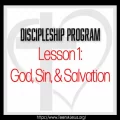
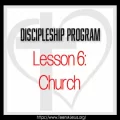
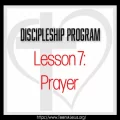
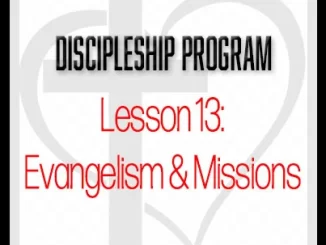
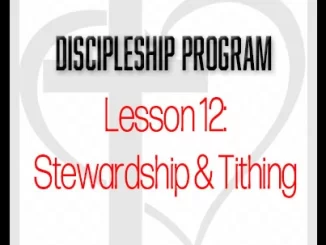

Be the first to comment